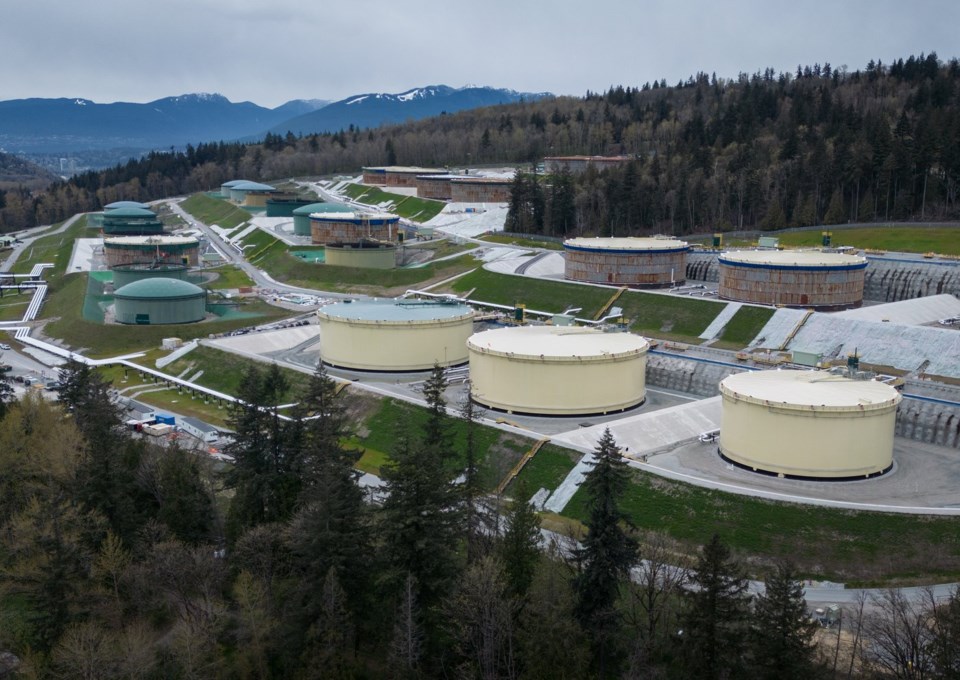Taxpayers are facing potential billions of dollars in losses on the sale of the Trans Mountain pipeline as the Parliamentary Budget Officer estimates its current value is less than the sum of its assets.
The pipeline could be worth between $29.6 billion and $33.4 billion, depending on several assumptions including what happens after the initial 20-year contracts expire, the budget watchdog said Friday.
Meanwhile, the pipeline's total assets amounted to $35.2 billion, liabilities were $26.9 billion and shareholder equity was $8.3 billion, as of Dec. 31, 2023.
If the pipeline was sold at the values estimated by the PBO, the proceeds would fall short of the government's equity in the project.
"After the outstanding liabilities are repaid, the remaining amount would be less than the shareholder’s equity. (Trans Mountain Corp.) would have to write off the balance of the equity and record a loss," said PBO analyst Jason Stanton in the report.
The shortfall range of between $1.8 billion and $5.6 billion is actually based on a best-case scenario, said Tom Gunton, professor of resource and environmental management at Simon Fraser University.
"Even under the most optimistic scenario, the conclusion is that the government will not recover its investment.”
The PBO's estimates assume the pipeline runs at full capacity, which isn't a given, and also uses a smaller discount rate than buyers would, said Gunton.
Under a less favourable outlook, including assuming only the 80 per cent of the pipeline that's under contract is used, and a steeper discount rate, the losses could swell to $15.2 billion in the PBO's model, he said.
The higher potential losses line up with Gunton's own estimates released in September.
In a report for the International Institute for Sustainable Development, he estimated the loss would be between $8.7 billion and $18.8 billion based on "the most realistic, likely assumptions."
"So bottom line: significant, significant loss to the taxpayer."
Earlier this week at a parliamentary committee meeting, Finance Minister Chrystia Freeland said she was "very confident Canadians will get a good deal" on the pipeline, and confirmed that she meant covering all of the public spending on the project.
The PBO said that whether the government makes a profit or takes a loss depends on what someone is willing to pay for it, noting the numerous variables at play.
The potential sale price will be influenced by the number of potential buyers, their cost in raising capital, when and how it will be sold, the market conditions at the time, whether it will be an arm's-length transaction, and whether certain groups will be prioritized in the sale, it said.
In terms of the difference between the PBO's headline value figures, the $29.2 billion is based on if the pipeline goes to a cost-of-service model after the initial 20 years, while the $33.4 billion is if current contracts are renewed.
The PBO notes that scenarios outlined by the ��ѻ��ý Energy Regulator show there could be considerable spare capacity in the pipeline by the early 2040s, depending on what climate action is taken in the meantime.
The Trans Mountain pipeline went into service in May at a cost of $34.2 billion, dramatically higher than the $7.4 billion estimate in 2017.
The pipeline carries crude oil from Alberta to the ��ѻ��ý coast. Its expansion tripled the capacity of the existing pipeline, adding an additional 590,000 barrels per day of shipping capability, bring the pipeline’s total capacity to 890,000 barrels per day.
The Trans Mountain expansion has brought an end — for now — to the transportation bottlenecks that for years kept a lid on the Canadian oil industry's ability to grow. With fresh ability to ship barrels out of Western ��ѻ��ý's oil-producing region, companies have been able to turn on the taps.
Now that it is completed, Canadian oil production is smashing records, and economists say Trans Mountain will provide a lift to the GDP of both the province of Alberta and ��ѻ��ý as a whole this year.
The federal government has said it does not wish to be the long-term owner of the pipeline and has already launched the first of what is expected to be a two-phase divestment process.
The first phase involves talks with more than 120 Indigenous nations located along the Trans Mountain route to see if any of them are interested in an equity stake.
The second phase, for which the timing is unclear, will involve the consideration of commercial offers.
Complicating any prospective sale, however, is the fact that Trans Mountain Corp. is still locked in a dispute with oil companies over the tolls it wishes to charge to use the pipeline.
Trans Mountain is looking to charge higher tolls to offset some of the project's budget overruns, but oil companies don't want to be held responsible for construction-related challenges.
The ��ѻ��ý Energy Regulator is scheduled to hold an oral hearing on the tolling dispute next spring. Critics say if the CER determines the oil industry should not have to pay for the bulk of the government-owned pipeline project's cost overruns, then taxpayers will be left on the hook.
-- With files from Amanda Stephenson in Calgary.
This report by The Canadian Press was first published Nov. 8, 2024.
Ian Bickis, The Canadian Press



